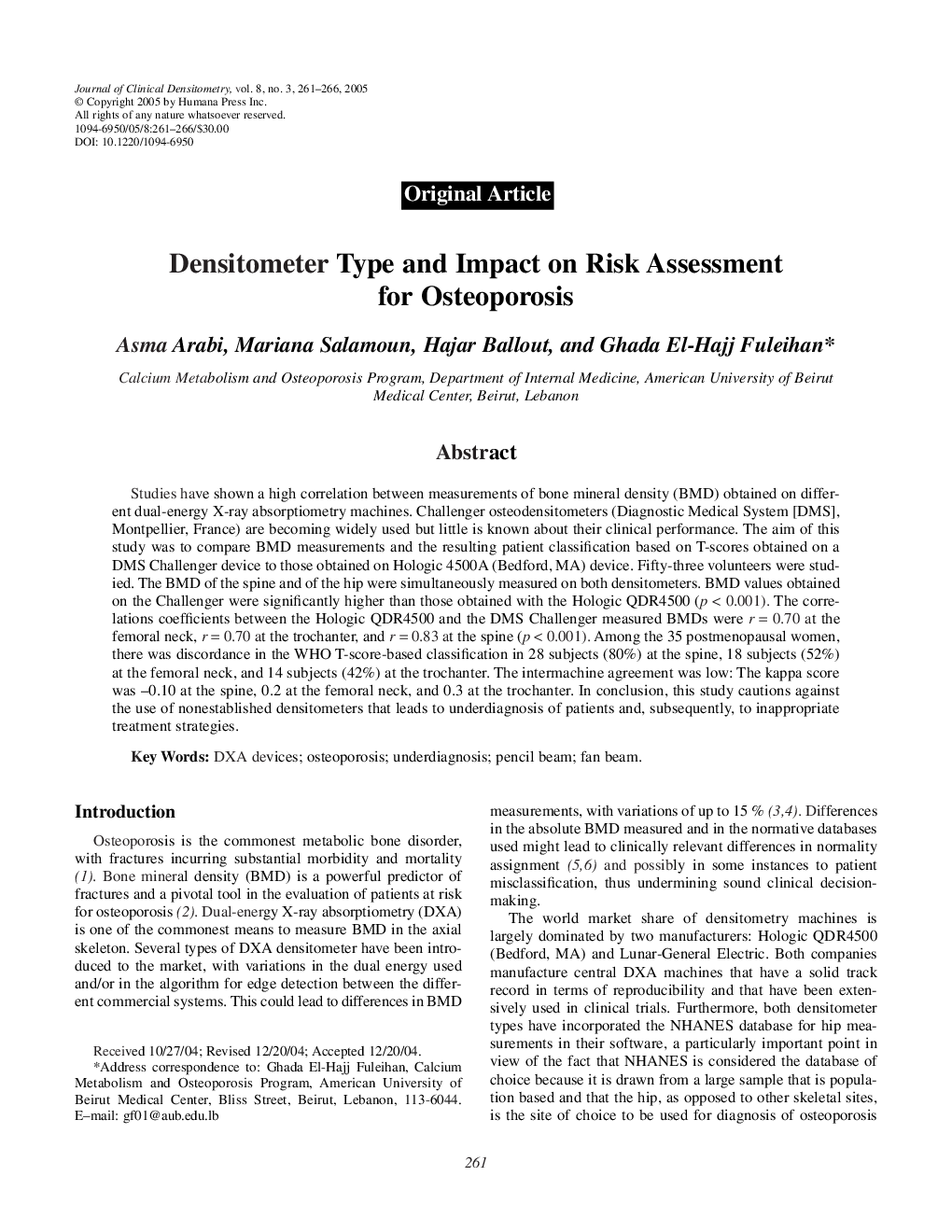| Article ID | Journal | Published Year | Pages | File Type |
|---|---|---|---|---|
| 9239607 | Journal of Clinical Densitometry | 2005 | 6 Pages |
Abstract
Studies have shown a high correlation between measurements of bone mineral density (BMD) obtained on different dual-energy X-ray absorptiometry machines. Challenger osteodensitometers (Diagnostic Medical System [DMS], Montpellier, France) are becoming widely used but little is known about their clinical performance. The aim of this study was to compare BMD measurements and the resulting patient classification based on T-scores obtained on a DMS Challenger device to those obtained on Hologic 4500A (Bedford, MA) device. Fifty-three volunteers were studied. The BMD of the spine and of the hip were simultaneously measured on both densitometers. BMD values obtained on the Challenger were significantly higher than those obtained with the Hologic QDR4500 (p < 0.001). The correlations coefficients between the Hologic QDR4500 and the DMS Challenger measured BMDs were r = 0.70 at the femoral neck, r = 0.70 at the trochanter, and r = 0.83 at the spine (p < 0.001). Among the 35 postmenopausal women, there was discordance in the WHO T-score-based classification in 28 subjects (80%) at the spine, 18 subjects (52%) at the femoral neck, and 14 subjects (42%) at the trochanter. The intermachine agreement was low: The kappa score was â0.10 at the spine, 0.2 at the femoral neck, and 0.3 at the trochanter. In conclusion, this study cautions against the use of nonestablished densitometers that leads to underdiagnosis of patients and, subsequently, to inappropriate treatment strategies.
Related Topics
Health Sciences
Medicine and Dentistry
Endocrinology, Diabetes and Metabolism
Authors
Asma Arabi, Mariana Salamoun, Hajar Ballout, Ghada El-Hajj Fuleihan,
